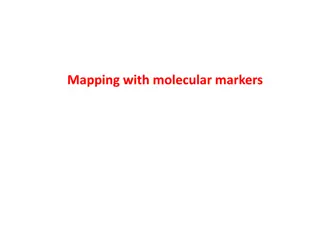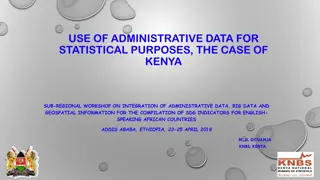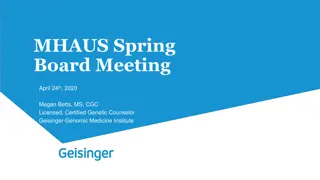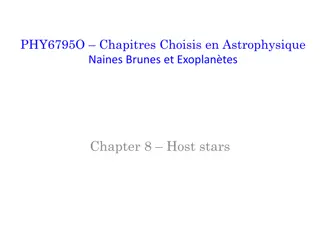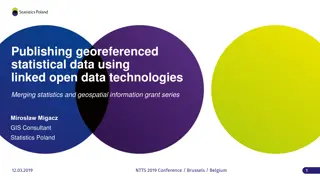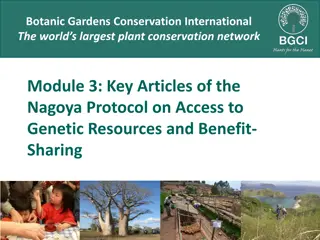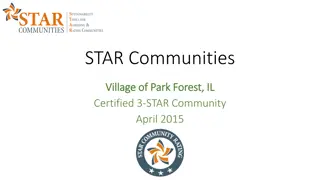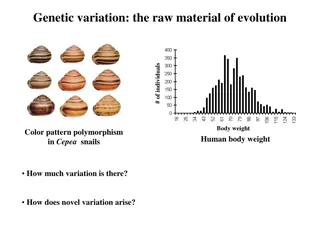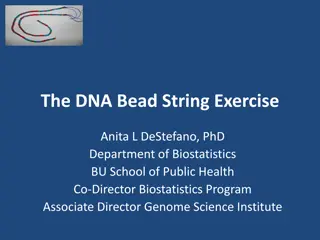Star-AI for Genetic Data Analysis: Incorporating Knowledge in Statistical Modeling
Knowledge-based approaches are crucial in genetic data analysis to enhance the accuracy and scope of genome-wide association studies (GWAS). Stochastic Relational AI (Star-AI) offers a solution by leveraging probability theory and First Order Logic to capture complex genetic interactions. By integrating biological insights, Star-AI aims to improve the effectiveness of statistical analyses in genetics. The application of Star-AI in studying yeast sporulation demonstrates its potential in modeling genotype-phenotype associations with lifted reasoning, providing a practical tool for optimizing genotype selection based on phenotype outcomes.
Download Presentation

Please find below an Image/Link to download the presentation.
The content on the website is provided AS IS for your information and personal use only. It may not be sold, licensed, or shared on other websites without obtaining consent from the author.If you encounter any issues during the download, it is possible that the publisher has removed the file from their server.
You are allowed to download the files provided on this website for personal or commercial use, subject to the condition that they are used lawfully. All files are the property of their respective owners.
The content on the website is provided AS IS for your information and personal use only. It may not be sold, licensed, or shared on other websites without obtaining consent from the author.
E N D
Presentation Transcript
Star-AI for the Analysis of Gene Data Ralf M ller Institute of Information Systems DFKI
Knowledge-based Genotype-Phenotype Associations Genome-wide association studies (GWAS) and similar statistical studies of g-p-linkage data assume simple (additive) models of gene interactions Methods often miss substantial parts of g-p-linkage Methods do not use any biological knowledge about underlying mechanisms Unconstrained GWAS require way too many population samples, and can succeed only in detecting a limited range of effects Goal: Incorporate knowledge into statistical analysis Need probability theory to capture uncertainty Need FO Logic to avoid model explosion Stochastic Relational AI (Star-AI) Deal with complex, non-additive genetic interactions Learning with datasets of reasonable size Need more data! Just like the ever repeated quest for an even larger collider in physics research Advertisement: Star-AI to the rescue No worries: Only one spot Nikita, Sakhanenko, David Galas. Markov Logic Networks in the Analysis of Genetic Data Journal of Computational Biology, Volume 17, Number 11, pp. 1491 1508, 2010.
Application: Yeast Sporulation Set of 374 progeny of a cross between two yeast strains (a wine and an oak strain) differing widely in their efficiency of sporulation For each of the progeny, the sporulation efficiency (phenotype) was measured and assigned a value from {very_low, low, medium, high, very_high} Each yeast progeny strain was genotyped at 225 markers (uniformly distributed along the genome) Each marker takes on one of two possible values indicating whether it derived from the oak or wine parent genotype Nikita, Sakhanenko, David Galas. Markov Logic Networks in the Analysis of Genetic Data Journal of Computational Biology, Volume 17, Number 11, pp. 1491 1508, 2010.
Our Research (Tanya Braun): Lifted reasoning (reasoning with placeholders) makes Star-AI practical Knowledge Base and its Use Goal: Model the effect of a single marker on the phenotype, i.e., sporulation efficiency: Signature of the model G(s, m, g): Markers genotype values across yeast crosses (evidence, predictor) E(s, v): Phenotype (sporulation efficiency) across yeast crosses (target) s: Strain m: Marker g: Genotype value (indicating wine or oak parent) v: Phenotype value (very_low, , very_high) Information need: Find optimal strains KB: MLN patterns: Semantics: Formulas and their weights define probability distribution over grounded predicates Queries: P( E(Strain, very_high)=true | G(Strain, m1, g1)=true, , G(Strain, m17, g23)=true ) Answer to satisfy information need: Return strains with k-highest probability values Formulas need not always be true
I do not merely apply AI methods I do AI research: Generalize intelligence across applications Challenges for Research Develop Intelligent Agents for Finding optimal targets for given predictors, improve through reinforcement (embodiment) Allow for cooperating agents to organize learning autonomously Generalize results from precision medicine Deal with interaction of gene sequences in a genome rather than single genes/markers? Exploit results on temporal reasoning (dynamic Star-AI)? Our preparatory work: Marcel Gehrke, Ralf M ller, Tanya Braun. Taming Reasoning in Temporal Probabilistic Relational Models in: Proceedings of the 24th European Conference on Artificial Intelligence (ECAI 2020), 2020. Marcel Gehrke. Taming Reasoning in Temporal Probabilistic Relational Models Dissertation 2021 Compile MLNs into Lifted Tensor Networks for faster execution on a quantum computer? Exploit entanglement of qubits in a lifted way to compute with reasonable number of qubits Nathan A. McMahon, Sukhbinder Singh & Gavin K. Brennen. A holographic duality from lifted tensor networks. npj Quantum Information volume 6, Article number: 36. 2020.
Take-Home Messages Incorporate Domain Knowledge into Statistical Analysis Martin (prob. automata): (Infinite) linear or tree structures and prop. logic Ralf (Star-AI): Finite graph structures and FO logic Do not rely on More Data will Solve the Problem daydream Also think in terms of Intelligent Agents and, e.g., reinforcement learning in a embodied setting, say, rather than only about gutting fashionable AI methods to pimp up data analyses
Lifted reasoning makes knowledge-based AI practical MLN Query Answering Algorithms Na ve grounding (combinatorial) Clever grounding (consider only relevant groundings, still combinatorial) Sampling (maybe quite inexact, approximation quality hard to control) Lifted query answering (exact, FPT: exponential in tree width , which is fixed for a model and small, linear in size of variable domains for liftable model classes) Our work: Tanya Braun. Rescued from a Sea of Queries: Exact Inference in Probabilistic Relational Models Dissertation 2020 Tanya Braun, Ralf M ller, Marcel Gehrke. https://www.ifis.uni-luebeck.de/index.php?id=672 Tutorial at ECAI 2020
MLN Learning from Application Data Estimate ground joint probability distribution from data Learning goal: Encode jpd in sparse form using MLNs Full MLN learning: Take model signature from database schema Determine suitable formulas from predicates in signature Determine weights using maximum likelihood estimator Weight learning only (formulas given): Determine weights using maximum likelihood estimator Lifted learning needs more work ] Lise Getoor, Ben Taskar. Introduction to Statistical Relational Learning. MIT Press, 2007.
Bibliography Application scenario: Nikita, Sakhanenko, David Galas. Markov Logic Networks in the Analysis of Genetic Data. Journal of Computational Biology, Volume 17, Number 11, pp. 1491 1508, 2010. See also: Yi, N., Yandell, B.S., Churchill, G.A., et al. 2005. Bayesian model selection for genome-wide epistatic quantitative trait loci analysis. Genetics 170, pp. 1333 1344, 2005. Luc De Raedt, Kristian Kersting, Sriraam Natarajan and David Poole, Statistical Relational Artificial Intelligence: Logic, Probability, and Computation, Synthesis Lectures on Artificial Intelligence and Machine Learning. 2016 For QA as well as learning algorithms for Star-AI, see: https://www.ifis.uni-luebeck.de/index.php?id=672 https://www.ifis.uni-luebeck.de/index.php?id=703&L=2


